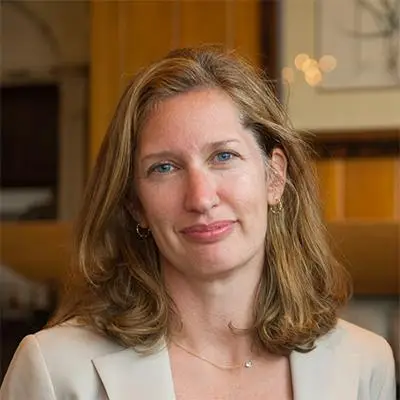The traditional district model is clearly not working for students with complex needs. Students with disabilities are typically assigned to specialized programs or are asked to fit into a one-size-fits-all classroom. If those options don’t work, families have little option but to hire a lawyer, if they can afford one.
Whether a student has a disability, is a non-native English speaker, has had a traumatic or disruptive life event, or has significant mental health challenges, more options are always better than fewer—but access and quality matter, too.
Paul Hill once told me that kids with unique needs drove his belief that public education needed what he came to call a portfolio strategy. He knew that a top-down system failed too many students by not giving families options and educators discretion. But he feared that a purely decentralized or market-based system would mean schools might exclude more challenging students, or simply not prioritize meeting specialized needs.
In Paul’s concept, someone (a school board, a mayor’s office, or a charter authorizer) would continually scan the community’s educational offerings to make sure every child could find a great school fit. If not, these leaders would invite proposals for new schools to fulfill the unmet need, create fairer enrollment processes, or ask community organizations to help schools better serve students on the margins. This cycle of continuous improvement would inspire a problem-solving mindset in principals and teachers that ensures all children—but especially those who are historically marginalized—achieve their very best.
Paul’s vision of innovation and continuous improvement is being realized in a growing number of cities. For example, STRIVE Prep charter schools, in partnership with its authorizer, Denver Public Schools, has created specialized programs to deliver a rigorous curriculum to students with profound learning disabilities. The school district provided funding and facilities to support the program, and STRIVE Prep staff collaborate on shared strategies for serving students with low-incidence disabilities. In New Orleans, a new nonprofit, New Pathways for New Orleans, is working to build connections between schools and other community organizations in the city to improve special education programs, strengthen the pipeline of special education professionals, increase students’ access to mental health services, and encourage new programs that reduce juvenile justice disparities.
Unified enrollment systems in some cities have eliminated or reduced “counseling out.” Innovative funding models in some states ensure money follows students according to need and provide risk pools to help schools pay for students with extraordinary needs. Charter management organizations, informal collaboratives, or regional service providers can allow decentralized schools to share services.
But an honest assessment of progress makes it clear that even the most advanced portfolio school systems have not fully delivered on their promise for students with specialized or expensive-to-meet needs. The families of children with special needs often have the most difficult time choosing among schools in a portfolio setting. Finding an appropriate fit, applying to, and enrolling in schools can be a daunting challenge, especially for low-income and non-English-speaking families.
Smaller, decentralized public schools may be better positioned to innovate and build strong organizational cultures, but often their size can make it difficult for them to provide the facilities, specialized staff, and other support that students with the most complex needs require.
Even schools that have achieved dramatic academic gains believe they will not continue to improve unless they can find new solutions for high-need students. An increasing number of schools in portfolio systems are asked to serve students with severe behavioral and emotional challenges, but are finding that they are not equipped to serve them well. And despite increasing pressure on portfolio and charter school providers to serve higher proportions of students with disabilities and other specialized needs, accountability systems and funder metrics too often fail to account for the challenges of measuring outcomes for these students.
New ideas, new investments, new policies, and new innovations are urgently needed to address these next-generation portfolio challenges. The more choice and autonomy become the norm—not the exception—the more urgent is the need to find new ways to ensure they bring advantages to the most vulnerable and unique student populations.
CRPE released a new brief today summarizing a set of recommendations that emerged from a recent convening we hosted.
The solutions discussed centered around the need for a comprehensive oversight of citywide functions, policies, and investments. We recommend that policy and civic leaders:
- Create a sense of urgency to dramatically improve special education and set a clear north star to guide the efforts of diverse organizations across the city.
- Provide adequate funding aligned with individual student needs.
- Develop performance frameworks, data systems, and school report cards that are mindful of the information parents need and the incentives they create for schools.
- Ensure parents get help navigating the process of identifying schools, enrolling their children, and advocating for their needs.
- Listen to parents and the organizations working with them to understand how they experience the system and what improvements are necessary.
- Listen to schools to identify systemwide challenges, such as talent supply, student mobility, and the difficulty of transferring IEP information across schools.
- Partner with researchers to understand what data school system leaders need to collect (or may already have) to shed light on systemwide challenges.
- Helping all educators (not just special education teachers) access knowledge, capacity, and support to meet students’ diverse needs.
- Facilitate collaborations between schools to solve shared problems, such as achieving economies of scale to partner efficiently with community health organizations.
- Support new public school models that are innovating to meet the needs of complex learners or serving students with low-incidence disabilities.
Cities that hope to address these challenges must do more than create one isolated program. They must find creative ways to build an integrated set of strategies and policies that reinforce each other and adapt to new circumstances.
The portfolio strategy offers a profound opportunity for educators to invent new solutions for students most in need. More than a set model, it is a problem-solving framework that says choice is necessary, but not sufficient, and that the job of government is to identify systemwide challenges and seek solutions. School districts and cities that embrace the portfolio mindset create more options for families, give educators more flexibility to solve problems and meet their students’ needs, and shift the role of government agencies to managing performance and ensuring equity.
There is, we acknowledge, significant risk that, in the process of trying to find solutions, well-intentioned policy people will overengineer, create unintended consequences, or recreate old, ineffective district systems. The great opportunity—and our aspiration—is that decentralized district and charter schools lead the way toward innovation and excellence for students with unique needs.
For those reasons, the goal cannot be to focus on numbers of students served or programs offered. The goal should be to innovate systemwide and find creative new ways to truly prepare every student for the future. Systems that have moved from “F” to “C” now must move from “C” to “A”. To do so will require thinking beyond the current assumptions, and a set of cities and leaders who are willing to continuously try new ideas.
We hope the ideas in this brief help launch that work.




